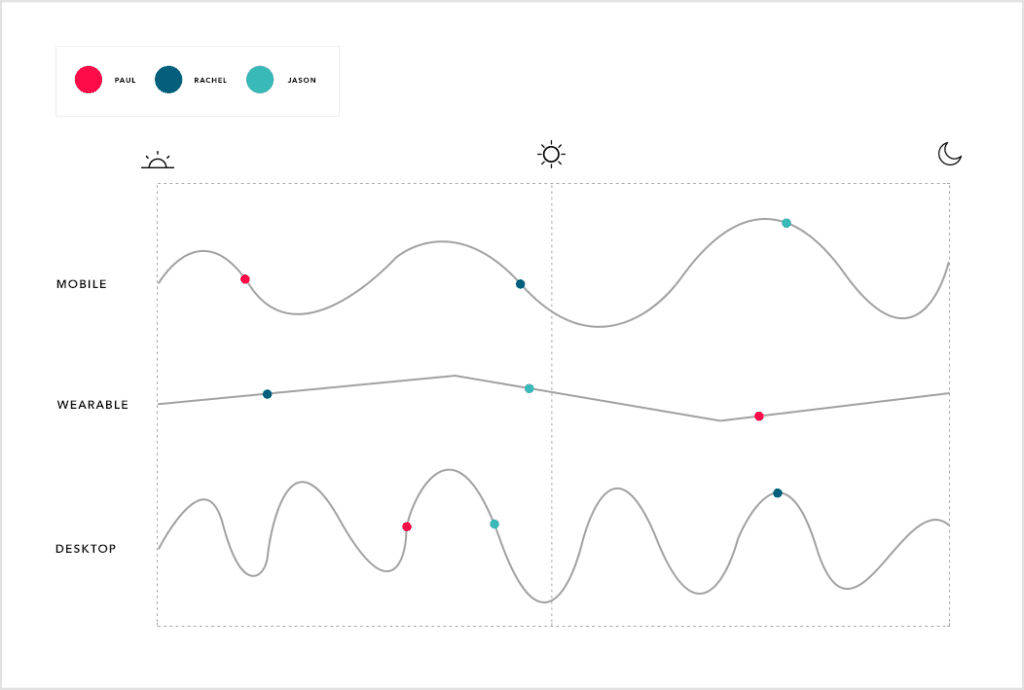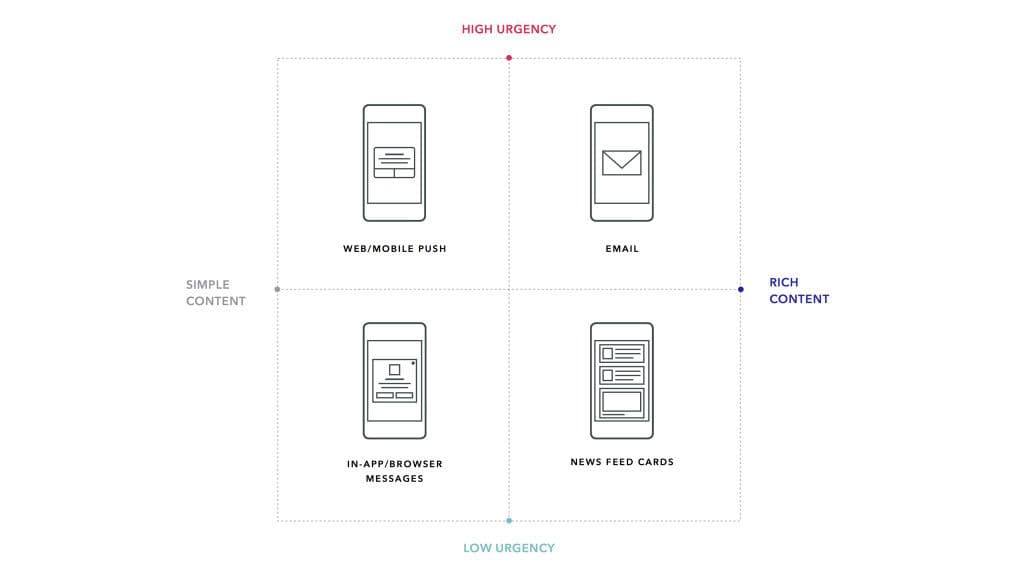The 7 Biggest Problems for a Mobile Marketer (And How To Fix Them)
Published on June 20, 2016/Last edited on June 20, 2016/8 min read


Team Braze
Every industry has its common challenges. In mobile marketing, connecting authentically with customers is a biggie. There are devices, and often thousands of miles, between you and your customers. If you could climb through these devices to speak directly to them, you might. Since we haven’t yet built that sort of tech, the challenge is making those real-life connections through the zeros and ones of the digital ether.
Here are a few of the most common mobile marketing challenges marketers face in their day-to-day effort to reach customers authentically, and some simple solutions for overcoming them, and giving your audience the experience they deserve.
Challenge #1: Wondering if now’s a good time 😬
In an old timey brick and mortar store, a shopkeep could interact with a customer as they browsed. They could get to know them, remember their face, take note of which products they prefer, build real relationships in real time. Now, the marketer has to be everywhere the customer is. Except not everywhere-everywhere, you know, just everywhere in exactly the right doses. In just the right ratio of I’m here, but not so here as to make you want to hide from me. It’s a bit like trying to cultivate a delicate rapport with a new neighbor—you want to be friendly without overdoing it. So what’s the magical formula for getting it right?
The solution: As with meeting that new neighbor, balance and some degree of emotional intelligence can carry you pretty far. Happily, unlike meeting that new neighbor, customer relationship data can give you a significant leg up. Customer data can help you send messages with smart timing, for example. This means you can send messages at the times each user is most like to respond. You should also consider capping your message frequency so as not to overwhelm. Customer uninstall, opt-out, and unsubscribe data can give you some insight into when and where you might have overdone it. (No shame, it happens to the best of us.) Use that information to limit message outreach in a given channel, across channels, or to do both simultaneously.

Use send-time optimization to ensure messages are sent at the right time for each user.
Challenge #2: Making it personal 👬 👭 👬 👭
Each marketing message begs the question, to whom am I speaking? Messages to active-app-using mom-types in in the midwest might differ from messages to no-longer-app-using college dudes in the southeast. Knowing who’s who, and how to speak to each customer in their own language, can feel like an onerous task. But, with the right CRM data applied smartly, it’s not so hard after all. Even simple attempts at personalization, like adding a user’s name to a communication, can go a long way.
The solution: The problem of personalization is best solved with user segmentation. Segmentation tools enable you to arrange information about your users based on demographics (female, over 45, lives in the northeast), behavior details (favors the boho-chic housewares category), and customer events you can define (she’s made two prior purchases, three months apart, for example). Now you know who she is! Which means you probably have some sense of how she prefers to receive information. With those details aligned, aim for the right context with personalization by inserting user attributes right into your message and sending messages to segments that make sense.
Challenge #3: Channel choices
The four major mobile messaging channels are push, in-app messages, email, and News Feed Cards. Each message is applied best in its own way on a scale of rich to simple content, and on a scale of high to low urgency. Just as there’s a right time and a right place for certain real-life conversations, there’s a right channel for each type of communication.

The solution: Know which channel is best for each type of message or campaign, and be sure you’re taking a multichannel approach to reach the customer. Don’t be afraid to run some multivariate tests to see how your efforts are shaping up.
Challenge #4: Data overload 😖
So much data, so little… time? So few resources? So few opportunities to put those data to use in ways that bring you closer to the customer? Or maybe the problem is understanding which direction the data are pointing. Or perhaps it’s an inability to find a solution in the particular numbers you’re looking at.
Either way, you likely have a sea of data at your fingertips. Your mission is to find ways to connect more deeply, more authentically with customers; but, using data as means to an authenticity end isn’t always easy. Spending too much time in data-land can gridlock a project, throw the brakes on decision making, and keep you from your end-game: communicating with your users.
The solution: Don’t hunt for questions in data. Look for answers. First, identify a problem. Develop a hypothesis for a solution to that problem. Then create a test, or explore existing data, to prove or disprove your hypothesis. The hypothesis will come from your intuition and experience. The data will prove you right or wrong. Then you can take action based on what you’ve learned.
And above all else, remember the customer in your process. All actions should drive you toward meeting, reaching, and delighting them.
Challenge #5: Not knowing who’s coming from where 😕
When you want to check the results of your marketing to see how people are finding your mobile app, and to figure out which download came from which marketing source, you can’t use cookie-based or campaign code tracking as you might with online acquisitions. That’s why install attribution can sometimes be a bit tricky. It’s hard to know how to best reach new users if you can’t be sure where they came from in the first place. So, how’s a marketer to develop a reliable attribution system?
The solution: Not to toot our own horn, but if this is your issue, Appboy might have the solution. With our Install Attribution feature, we partner with app tracking platforms to aggregate all the data that points to your users’ origins. Not only can you see where your users are coming from, but you can also create segments and send campaigns based on specific install sources.

Challenge #6: Wanting to be, like, casual and friendly, man 😎
Mission Chinese, a trendy NYC restaurant, designed their website to look like a MySpace page. (Spoiler alert: they’re bffs with sinBAD and their body type is “more to love”.) Emoji appear almost 800% more in 2016 marketing campaigns than they did in 2015 marketing campaigns. And Buzzfeed, one of the 50 most popular sites in the US, can’t stop giffing all over itself.
Where’s your place in all this tomfoolery? Is it for you? Where’s the line between a lack of professionalism and simply creating a colloquial rapport with your users and customers?
The solution: When it comes to emojis, it may be time to hop on the bandwagon, friend. 92% of people who use the Internet, use emoji. So chances are good that includes the community to whom you’re marketing. As for the rest, we know by now that authentic, relationship-based marketing takes the cake. This means keeping it as real as possible, and staying true to who your brand is, and who we are as people, outside of the marketing context. So give “being yourself” a go, and see how customers respond.
Challenge #7: 24/7 expectations, 8-hour workday 💻
You want to promote your winter sale with a wintery-wonderland image, but the weather is so crazy these days, who knows if it’ll actually snow on the day the message is supposed to go out? A local team is playing in a big game, and you want to send a marketing message to coincide with their win or loss, but it’ll happen mid-day on Sunday, and you’re not prepared to be available at that exact moment. How to stay up-to-the-moment, and also have a life?
The solution: With dynamic content, you can prepare different versions of your message for all possible anticipated outcomes. You can use public API data (like on the weather, sports scores, or stock prices) in concert with your marketing platform to ensure the right content is sent to the right users. For example, you can ensure that customers enduring a hailstorm in Vermont get a different message than those enjoying a sunny Los Angeles day. With dynamic content, you can reach your audience as events happen without having to stand by your marketing automation platform 24/7 to hit “send” the moment a current event comes to pass.
Focus on the solution, for the customer
As customer expectations continue to evolve, marketers have the opportunity to grow into ever-more authentic incarnations of themselves. New challenges in digital marketing are solutions waiting to be discovered, whether it’s a new piece of automation, or a new attitude toward your own language or style choices.Keep the customer in your line of vision at all times—their needs, not your needs from them—and the answers to your how-to-connect-authentically conundrums are likely to bubble up quite naturally.
Be Absolutely Engaging.™
Sign up for regular updates from Braze.
Related Content
View the Blog
Delivering elevated email experiences for holiday campaigns

Meredith Mitchell

10 essential mobile app metrics and engagement KPIs (and how to use them)

Team Braze

Embracing the future of customer engagement: Insights from Braze City x City London
